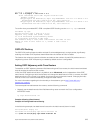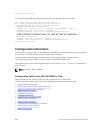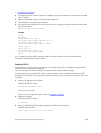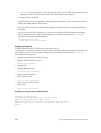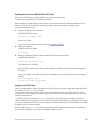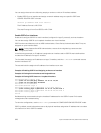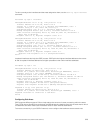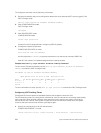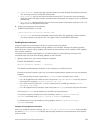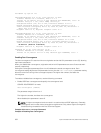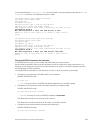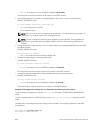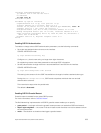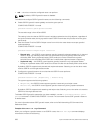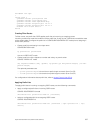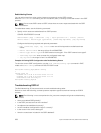• start-interval: set the minimum interval between the initial sending and resending the same
LSA. The range is from 0 to 600,000 milliseconds.
• hold-interval: set the next interval to send the same LSA. This interval is the time between
sending the same LSA after the start-interval has been attempted. The range is from 1 to 600,000
milliseconds.
• max-interval: set the maximum amount of time the system waits before sending the LSA. The
range is from 1 to 600,000 milliseconds.
2. Specify the interval for LSA acceptance.
CONFIG-ROUTEROSPF- id mode
timers throttle lsa arrival arrival-time
• arrival-time: set the interval between receiving the same LSA repeatedly, to allow sufficient
time for the system to accept the LSA. The range is from 0 to 600,000 milliseconds.
Enabling Passive Interfaces
A passive interface is one that does not send or receive routing information.
Enabling passive interface suppresses routing updates on an interface. Although the passive interface
does not send or receive routing updates, the network on that interface is still included in OSPF updates
sent via other interfaces.
To suppress the interface’s participation on an OSPF interface, use the following command. This
command stops the router from sending updates on that interface.
• Specify whether all or some of the interfaces are passive.
CONFIG-ROUTEROSPF- id mode
passive-interface {default | interface}
The default is enabled passive interfaces on ALL interfaces in the OSPF process.
Entering the physical interface type, slot, and number enables passive interface on only the identified
interface.
– For a port channel, enter the keywords port-channel then a number from 1 to 128.
– For a 10-Gigabit Ethernet interface, enter the keyword TenGigabitEthernet then the slot/port
information (for example,
passive-interface ten 2/3).
– For a VLAN, enter the keyword vlan then a number from 1 to 4094 (for example, passive-
interface vlan 2222).
– For a 40-Gigabit Ethernet interface, enter the keyword fortyGigE then the slot/port information.
The keyword default sets all interfaces on this OSPF process as passive.
To remove the passive interface from select interfaces, use the no passive-interface
interface command while passive interface default is configured.
To enable both receiving and sending routing updates, use the no passive-interface
interface command.
Example of Viewing Passive Interfaces
When you configure a passive interface, the show ip ospf process-id interface command adds
the words
passive interface to indicate that the hello packets are not transmitted on that interface
(shown in bold).
Open Shortest Path First (OSPFv2 and OSPFv3)
631



